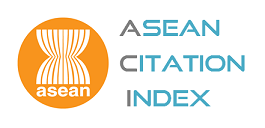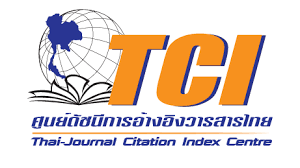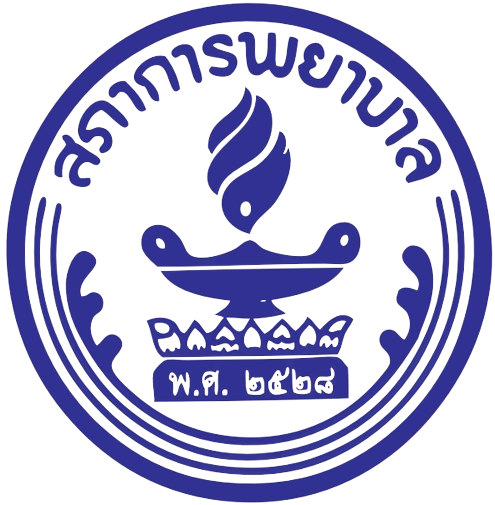Nursing Management of Patients with CAR T-cell Therapy: A Case Study
DOI:
https://doi.org/10.60099/jtnmc.v40i02.272254Keywords:
chimeric antigen receptor T cell therapy (CAR T cell), nursing care, refractory DLBCL, complication, case studyAbstract
Cell therapy is an emerging treatment technology for hematologic cancers. It utilizes genetic engineering knowledge to modify T-cell receptor molecules to bind to specific proteins on the surface of cancer cells, without relying on the expression of genes and proteins on the cancer cell surface. This allows cell therapy to target and kill cancer cells precisely. Nurses play a crucial role in caring for patients undergoing cell therapy, from the admission process to assessing physical and mental readiness. These patients often endure suffering from multiple chemotherapy and/or radiotherapy regimens, leading to physical decline and anxiety due to previous treatment failures. Fear of disease recurrence or ineffective cell therapy constantly troubles patients. Establishing a relationship between nurses and patients is essential. Listening to patients’ thoughts and feelings about the treatment, their past experiences with illness, and assessing their understanding of cell therapy helps nurses gain deep insights into patients. Providing treatment information at appropriate times, informing patients about potential side effects such as fever, low blood pressure, or low blood oxygen levels, teaching patients to keep records, and instructing relatives to observe patients’ behavior, speech, and memory during treatment can be initiated from the first day of hospitalization. Any changes after cell therapy must be reported to the medical team immediately, as they may indicate complications such as acute inflammatory cytokine release syndrome or neurological disorders. Listening, providing information, and co-designing self-care processes with patients help alleviate anxiety, build trust in nurses, and foster cooperation with the treatment team, leading to positive nursing outcomes. This article aims to analyze patients’ health problems to enhance nurses’ understanding of risk factors, symptoms, and laboratory findings related to complications from cell therapy, and the role of nurses in managing these complications. This knowledge enables nurses to anticipate potential complications and provide timely assistance, reducing patient mortality. The case study involves a patient with stage 4 (diffuse large B-cell lymphoma) lymphoma, with lesions in the central nervous system and refractory disease, classified as having a poor prognosis. After responding to the third chemotherapy regimen, the patient continued treatment with cell therapy. During hospitalization, complications to monitor include: 1) tumor lysis syndrome, 2) acute inflammatory cytokine release syndrome, 3) neurological disorders known as ICANS, 4) severe acute allergic reactions, and 5) bone marrow suppression leading to low blood cell counts. Post-discharge, during the follow-up period after cell therapy, the patient is at risk of infection due to immune system dysfunction. During this period, patients must continue self-care at home. The total hospitalization period was 30 days. Laboratory follow-up over nine months revealed immune system dysfunction, with no detectable B-cell activity due to cell therapy’s inability to distinguish between normal and cancerous B-cells sharing the CD19 antigen. Immunoglobulin G levels, which protect against infections, were below standard, increasing the patient’s infection risk. Educating patients on self-care post-discharge and enhancing communication channels between the hospital and patients will boost patients’ confidence in self-care, adaptation, acceptance of treatment plans, and appropriate self-care.
Downloads
References
Lonez C, Breman E. Allogeneic CAR-T therapy technologies: has the promise been met?. Cells 2024; 13(2): 1-25. https://doi.org/10.3390/cells13020146 PMID: 38247837
Pimjai Niparuck. In Acute lymphoblastic leukemia. In: Pimjai Niparuck, editor. leukemia. Bangkok: The Ramathibodi Manuscript Project; 2021. p. 241-93.
Anurathapan U. Genetic-modified t cell therapy in hematologic malignancies. J Hematol Transfus Med. 2016; 26: 61-5.
June CH, Sadelain M. Chimeric antigen receptor therapy. N Engl J Med 2018; 379(1): 64-73. https://doi.org/10.1056/NEJMra1706169 PMID: 29972754
Stewart J. Kymriah FDA Approval History [Internet]. 2022 [cited 2024 Jul 2]. Available from: https:// www.drugs.com/history/kymriah.html
FDA.gov. FDA approves axicabtagene ciloleucel for second-line treatment of large B-cell lymphoma [Internet]. 2022 [cited 2024 Jul 2]. Available from: https://www.fda.gov/drugs/resources-informationapproved-drugs/fda-approves-axicabtagene-ciloleucelsecond-line-treatment-large-b-cell-lymphoma
FDA.gov. Breyanzi (lisocabtagene maraleucel) [Internet]. 2024 [cited 2024 Jul 2]. Available from: https://www.fda.gov/vaccines-blood-biologics/cellular-genetherapy-products/breyanzi-lisocabtagene-maraleucel
Sengsayadeth S, Savani BN, Oluwole O, Dholaria B. Overview of approved CAR‐T therapies, ongoing clinical trials, and its impact on clinical practice. EJHaem 2021; 24(3)(Suppl 1): 6-10. https://doi.org/10.1002/jha2.338 PMID: 35844299
Yi JH, Jeong SH, Kim SJ, Yoon DH, Kang HJ, Koh Y, et al. Outcomes in refractory diffuse large b-cell lymphoma: results from two prospective Korean cohorts. Cancer Res Treat 2023; 55(1): 325-33. https://doi.org/10.4143/crt.2022.008 PMID: 35468269
Locke, Frederick L. Locke FL, Filosto S, Chou J, Vardhanabhuti S, Perbost R, Dreger P, et al. Axicabtagene ciloleucel as second-line therapy for large B-cell lymphoma. N Engl J Med 2022; 386(7): 640-54. https://doi.org/10.1056/NEJMoa2116133 PMID: 34891224
Shah BD, Cassaday RD, Park JH, Houot R, Oluwole OO, Logan AC, et al. Impact of prior therapies and subsequent transplantation on outcomes in adult patients with relapsed or refractory b-cell acute lymphoblastic leukemia treated with brexucabtagene autoleucel in ZUMA-3. J Immunother Cancer 2023; 11(8):1-25. https://doi.org/10.1136/jitc-2023-007118 PMID: 37648261
Xu X, Huang XX, Xiao X, Sun Q, Liang X, Chen S, et al. Challenges and clinical strategies of CAR T-cell therapy for acute lymphoblastic leukemia: Overview and developments. Front Immunol 2021; 11: 569117. https://doi.org/10.3389/fimmu.2020.569117 PMID: 33643279
Shumilov E, Boyadzhiev H, Mazzeo P, Akhoundova D, Daskalakis M, Novak U, et al. CAR-T cell therapy shows similar efficacy and toxicity in patients with DLBCL regardless of CNS involvement. HemaSphere 2023; 7(12): 2-10. https://doi.org/10.1097/HS9.0000000000000984 PMID: 38044958
Faramand R, Jain M, Staedtke V, Kotani H, Bai R, Reid K, et al. Tumor microenvironment composition and severe cytokine release syndrome (CRS) influence toxicity in patients with large b-cell lymphoma treated with axicabtagene ciloleucel. Clin Cancer Res 2020; 26(18):4823-31. https://doi.org/10.1158/1078-0432.CCR-20-1434 PMID: 32669372
Frey N, Porter D. Cytokine release syndrome with chimeric antigen receptor t cell therapy. Biol Blood Marrow Transplant 2019; 25(4): e123-7. https://doi.org/10.1016/j.bbmt.2018.12.756 PMID: 30586620
Brudno JN, Kochenderfer JN. Recent advances in CAR T-cell toxicity: mechanisms, manifestations and management. Blood Rev 2019; 34: 45-55. https://doi.org/10.1016/j.blre.2018.11.002 PMID: 30528964
Santomasso BD, Park JH, Salloum D, Riviere I, Flynn J, Mead E, et al. Clinical and biological correlates of neurotoxicity associated with CAR T-cell therapy in patients with b-cell acute Lymphoblastic Leukemia. Cancer discov 2018; 8(8):958- 71. https://doi.org/10.1158/2159-8290.CD-17-1319 PMID: 29880584
Hill JA, Seo SK. How I prevent infections in patients receiving CD19-targeted chimeric antigen receptor T cells for B-cell malignancies. Blood. 2020; 136(8): 925-35. https://doi.org/10.1182/blood.201900 4000 PMID: 32582924
Chohan KL, Siegler EL, Kenderian SS. CAR-T cell therapy: the efficacy and toxicity balance. Curr Hematol Malig Rep 2023; 18(2): 9-18. https://doi.org/10.1007/s11899-023-00687-7 PMID: 36763238
Frey NV, Shaw PA, Hexner EO, Pequignot E, Gill S, Luger SM, et al. Optimizing chimeric antigen receptor t-cell therapy for adults with acute lymphoblastic leukemia.” J Clin Oncol 2020;38(5):415-22. https://doi.org/10.1200/JCO.19.01892 PMID: 31815579
Liang X, Hu R, Li Q, Wang C, Liu Y. Prognostic factors for diffuse large B-cell lymphoma: clinical and biological factors in the rituximab era. Experimental hematology. 2023; 122:1-9. https://doi.org/10.1016/j.exphem.2023.03.003 PMID: 36933759
Zeylabi F, Fard NNG, Parsi A, Pezeshki SMS. Bone marrow alterations in COVID-19 infection: the root of hematological problems. Curr Res Transl Med 2023; 7(3): 103407. https://doi.org/10.1016/j.retram.2023.103407 PMID: 37544028
Moritra P, Chatterjee A, Kota PK, Epari S, Patil V, Dasgupta A, et al. Temozolomide-induced myelotoxicity and single nucleotide polymorphisms in the MGMT gene in patients with adult diffuse glioma: a single-institutional pharmacogenetic study. J Neurooncol 2022; 156(3): 625-34. https://doi.org/10.1007/s11060-022-03944-6 PMID: 35037156
Bianchi M, Vaglio S, Pupella S, Marano G, Facco G, Liumbruno GM, et al. Leucoreduction of blood components: an effective way to increase blood safety?. Blood Transfus. 2016; 14(3): 214-27. https://doi.org/10.2450/2015.0154-15 PMID: 26710353
Urwijitaroon Y. The importance of antibody testing in the ABO system.J Hematol Transfus Med. 2015; 25(4): 347-54.
Ma S, Wang Y, Qi K, Lu W, Qi Y, Cao J, et al. Associations of granulocyte colony-stimulating factor with toxicities and efficacy of chimeric antigen receptor T-cell therapy in relapsed or refractory B-cell acute lymphoblastic leukemia. Cancer Immunol Immunother 2024; 73(104): 1-7. https://doi.org/10.1007/s00262-024-03661-1 PMID: 38630258
Thasaneesuwan S and Nilmanar K. Psychological distress in patient with cancer undergoing chemotherapy and nursing care. JRN-MHS. 2019; 39(4): 110-9.
Cairo MS, Bishop M. Tumour lysis syndrome: new therapeutic strategies and classification. Br J Haematol 2004;127(1): 3-11. https://doi.org/10.1111/j.1365-2141.2004.05094.x PMID: 15384972
Durfee EM. Tumor Lysis Syndrome. Crit Care Nurse 2022; 42(3): 19-25. https://doi.org/10.4037/ccn2022795 PMID: 35640898
Puri I, Sharma D, Gunturu KS, Ahmed AA. Diagnosis and management of tumor lysis syndrome. J Community Hosp Intern Med Perspect 2020;10(3): 269-72. https://doi.org/10.1080/20009666.2020.1761185 PMID: 32850076
Cuker A, Altman JK, Gerds AT, Wun T, et al. American society of hematology self-assessment program textbook. 7th ed. Washington: American society of hematology; 2019.
Lee DW, Santomasso BD, Locke FL, Ghobadi A, Turtle CJ, Brudno JN, et al. ASTCT consensus grading for cytokine release syndrome and neurologic toxicity associated with immune effector cells. Biol Blood Marrow Transplant 2019; 25(4): 625-38. https://doi.org/10.1016/j.bbmt.2018.12.758 PMID: 30592986
Morin S, Boroli F, Vandenberghe-Durr S, Allali D, Masouridi-Levrat S, Chalandon Y, et al. Severe anaphylaxis after chimeric antigen receptor t-cell injection: a case report. EJHaem 2024; 5(3): 603-6. https://doi.org/10.1002/jha2.874 PMID: 38895058
Bonifant C, Jackson HJ, Brentjens RJ, Curran KJ. Toxicity and management in CAR t-cell therapy. Mol Ther Oncolytics 2016; 20(3):1-7. https://doi.org/10.1038/mto.2016.11 PMID: 27626062
Miao L,Zhang Z, Ren Z, Li Y. Reactions related to CAR-T ell therapy. Front Immunol 2021; 28(12): 663201. https://doi.org/10.3389/fimmu.2021.663201 PMID: 33995389
Downloads
Published
How to Cite
Issue
Section
License
Copyright (c) 2025 Journal of Thailand Nursing and Midwifery Council

This work is licensed under a Creative Commons Attribution-NonCommercial-NoDerivatives 4.0 International License.








